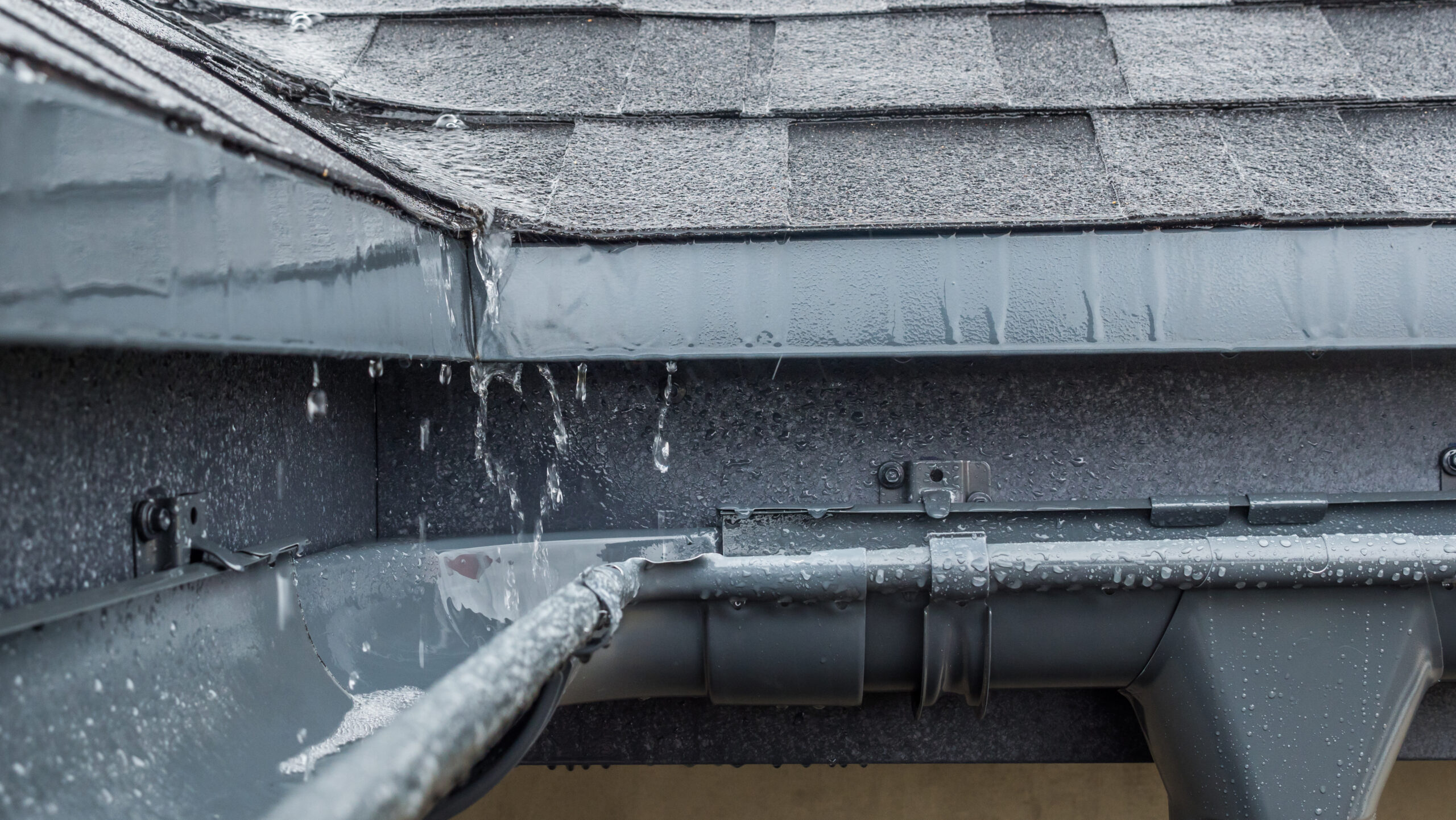
How To Repair A Leaking Gutter
With constant exposure to rain, storms, snow, heat, and wind, rain gutters don’t have it easy.
With better quality material, you can get away with years without the need to repair. But, most of the time, gutters take frequent damage and can develop holes and cracks that leak water everywhere. As such, leaking gutters can cause extensive water damage to surrounding walls.
However, when you spot a leak, it does not have to mean it’s time for a replacement. Probably the issue can be fixed soon enough. But, you can identify that it’s a time for action when water is constantly dripping or forming puddles at the base of your gutter.
So, before you face some serious water damage, take a look at how to repair leaking gutters.
How To Repair Leaking Gutters?
1. Determine If The Issue Is A Leak Or A Clog
One of the first things you should figure out about leaking gutters is this- are there broken seams, small holes or cracks? Or is it a case of debris blocking the rain gutter? If there is a blockage in the gutters, that will cause rainwater to overflow and leak at the seams.
When such a scenario happens, wait for the rainstorm to pass and climb on the roof with a ladder to look at the rain gutters. After any storm, you can expect to see an assortment of leaves, tree roots, branches, and other debris clogging the rain gutters. If that is the case, then the problem might be resolved with a bit of gutter cleaning.
Simply remove the debris using a small trowel and hand gloves, and throw it away in a bucket to chuck it out. Then you can use a powerful garden hose to clean the remaining dirt and marsh. Now, if the water flows freely through your downspout, all is good again.
Remember that regular cleaning after rains is all you need to fix this situation and keep the gutters in good shape.
2. Tighten Any Loose Gutters
Sometimes gutters can leak because they have loosened over time. The sagging gutters allow water to seep between the gutters and the walls. Usually, this happens due to the gutter hangers and screws coming loose or even developing rust from exposure to heat and years of water pressure.
If you look closely at such leaking rain gutters, the droop might actually be visible, and they may look bent. And at other times, the sag may not be prominent, which might be confusing until you inspect the issue.
Remember that the drop towards the downspout should not exceed 1/4-inch. If it drops any lower, check the rain gutters for the gutter fastener.
Often, the aluminum gutters have clips or spikes, keeping the structure in place. And if these fasteners have developed rust, hammering it tight will not fix leaking gutters. You will have to replace the old one with a thick, long screw or nail about seven to eight inches long to hold the gutter together.
Usually, these rain gutter clips can be found at local home improvement centres, with 10-50 available per packet. If the clips are still in good condition but missing screws, you can add new ones that are at least two inches long to hold the gutter.
3. Fix The Cracks And Holes In Gutter
As you may know, regular gutters do not last forever, and some of the other issues are expected to develop with age. The integrity of the gutter gives way after years of pressure, water flow, extreme heat, or cold temperatures. Quite inevitably, they start to develop small holes and cracks, especially near the screws, and rusting and general wear is a common occurrence.
With this, the most vulnerable parts of the gutter start leaking and might need some repairs. This will be evident with small drips developing on the side of the rain gutters, especially from the joints. So, investigate the matter to check how deep the damage has become.
If the cracks are fairly small, you can postpone gutter repairs since it might be able to handle another season or two. A temporary solution for small cracks could be to apply a water-resistant sealant like rubber or silicone gutter caulk. You can find this product online or at nearby stores. Once you purchase the caulk, spread some on the cracked area, pushing it into the holes.
4. Add Drip Edges Or Gutter Aprons
Rainwater does not always flow correctly from the pipes down to disposal. Sometimes, it runs off the track, and then you are faced with excess water on the walls, which you do not want to see. Since this can happen even if the gutters are in place, there is nothing you can do to fix the issue.
So, if you want to avoid random puddles at the base of your walls, try adding a gutter apron or drip edges. This device is essentially an L-shaped metal that you can attach to the roof with regular nails. Since the device tilts downwards, the rainwater collects to pour the water directly into the gutter.
Available in 10-foot sections, adding this structure eliminates the gap, and the water takes its designated course.
Final Words
In closing, you will face gutter leaks sometime or the other. But there are a few things you can do to prevent this issue from occurring frequently. Firstly, make it a point to clean rain gutters at the end of each season. Mainly, remove the leaves, tree branches, grunge, and mush that accumulate over time.
Alternatively, you could install a mesh guard to prevent large things like leaves from falling through. Also, keep the roof clean because when it rains, all the debris will find its way into the rain gutter. Another thing you can do is conduct an annual check-up for cracks and holes and fix them using caulk.
With these steps, you will be able to prevent leaky gutters efficiently.